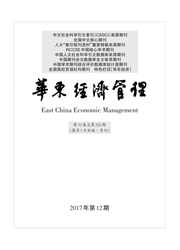

 中文摘要:
中文摘要:
基于单一和双销售渠道,文章分别构建了政府补贴情形和以奖代补情形下的低碳供应链决策模型,比较了政府组合低碳规制措施给低碳供应链减排策略带来的变化,分析了不同渠道结构对供应链成员利润的影响。结果表明:相同减排程度下,双销售渠道模式政府补贴力度大于单一销售渠道模式的补贴力度。对低碳供应链企业采用以奖代补政策时,两种销售模式下奖励力度的大小不仅与企业自身的减排成本有关,还取决于政府设定的减排目标。政府应针对不同销售渠道采用不同的规制措施,对单一销售模式,最好采取一次性奖励措施,对双销售渠道模式,更适合进行补贴。
 英文摘要:
英文摘要:
Based on the single and dual sales channels, this paper constructs the low carbon supply chain decision model in the contexts of government subsidy and substituting subsidy with reward respectively, compares the changes of low carbon supply chain emissions reduc- tion strategy brought about by the government combined low carbon regulation measures, and analyzes the impacts of different channels on the profits of supply chain members. The results show that the subsidy in the dual channel sales mode is higher than that in the single sales channel under the same degree of emissions reduction. In the context of substituting subsidy with reward, the quantities of carbon emissions reduction of the two models are not only related to the size of each production costs, but also with the reduction standards set by the government. It is better to adopt a one-time incentive measure under the single sales mode, and the subsidy is much better for the dual channel supply chain.
 同期刊论文项目
同期刊论文项目
 同项目期刊论文
同项目期刊论文
 期刊信息
期刊信息
